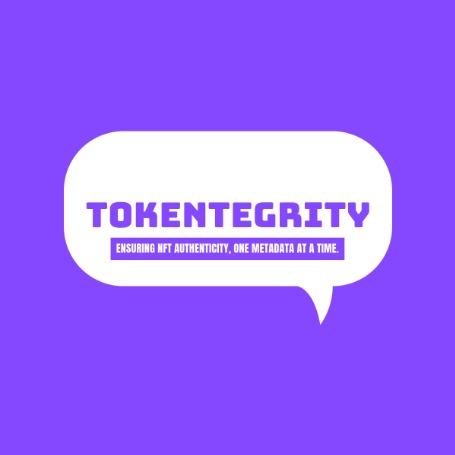TokenTegrity
TokenTegrity: Ensuring NFT authenticity, one metadata at a time.
Created on 2nd November 2024
•
TokenTegrity
TokenTegrity: Ensuring NFT authenticity, one metadata at a time.
The problem TokenTegrity solves
TokenTegrity tackles the growing need for trust and security in the NFT ecosystem. As NFT usage expands, so does the risk of data inconsistencies, incomplete metadata, and potential for duplication within token collections. These issues lead to confusion for collectors, devalue digital assets, and create barriers for platforms aiming to ensure the quality of NFT data.
How People Can Use TokenTegrity
TokenTegrity enables developers, NFT creators, and collectors to easily validate the metadata of ERC-721 tokens, ensuring that the NFT data is accurate, complete, and compliant with industry standards. By leveraging TokenTegrity, users can:
- Verify Metadata Completeness: Ensure that each NFT’s metadata contains required fields like image and attributes, reducing the chances of missing or incomplete data.
- Detect Duplicate Traits: Identify duplicate trait_type fields within a token's metadata, promoting uniqueness and data integrity within NFT collections.
- Enhance Trust and Security: By offering an automated validation tool, TokenTegrity provides a quick and reliable way to confirm the quality of NFTs, fostering a safer environment for both creators and collectors.
Benefits
- Streamlined Validation: NFT creators and developers can save time by automating metadata validation rather than manually inspecting metadata for each token.
- Boosted Credibility: Platforms and marketplaces can integrate TokenTegrity to offer end-users a secure, verified, and transparent view of NFT collections.
- Improved Collector Confidence: With verified metadata, collectors can make informed decisions, fostering trust in the NFT assets they acquire.
TokenTegrity empowers the NFT community with an essential tool for maintaining data quality, reducing risk, and promoting confidence in the authenticity of digital assets.
Challenges we ran into
Building TokenTegrity presented several unique challenges. Here are some of the key ones:
- Handling IPFS URLs
One of the main challenges was dealing with IPFS (InterPlanetary File System) URLs in the NFT metadata.
Problem: Metadata URLs are IPFS-based and begin with ipfs://, which cannot be directly accessed via standard HTTP requests.
Solution: We converted IPFS URLs to HTTP format by replacing the ipfs:// prefix with https://ipfs.io/ipfs/, allowing us to fetch the metadata from IPFS seamlessly.
- Validating NFT Metadata for Completeness
Ensuring each token’s metadata fields were complete was crucial for our project’s integrity.
Requirements: Validate required fields like image and attributes.
Approach: Built a function to parse through each attribute and validate that no fields were missing or incomplete.
- Detecting Duplicate Traits in Metadata
We encountered issues while detecting duplicate trait_type values within each token’s attributes.
Solution: Implemented a robust check using a set data structure to quickly identify and flag any duplicates.
- Managing Error Handling
Error handling was a significant hurdle, especially with network requests and metadata parsing.
Approach: Added custom error handling in both the backend and frontend to provide users with meaningful error messages.
Benefit: Ensured a smooth user experience and allowed users to troubleshoot issues with specific metadata files effectively.
Tracks Applied (1)
QuickNode: Best Overall Project
Technologies used
Cheer Project
Cheering for a project means supporting a project you like with as little as 0.0025 ETH. Right now, you can Cheer using ETH on Arbitrum, Optimism and Base.
